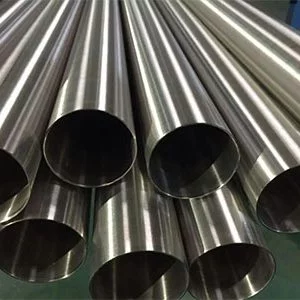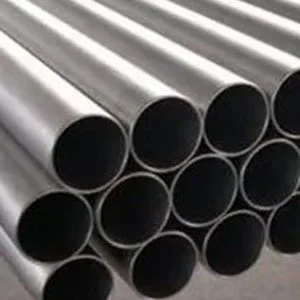Introduction

310 stainless steel, renowned for its exceptional resistance to high temperatures and corrosion, has found widespread utility across various industries. This blog delves into the diverse applications of 310 stainless steel, highlighting its properties and advantages.
Properties of 310 Stainless Steel
310 stainless steel possesses remarkable properties that make it suitable for demanding applications:
- High Temperature Resistance: One of the most outstanding properties of 310 stainless steel is its exceptional resistance to high temperatures. With a high melting point, typically above 1400°C, and excellent oxidation resistance, this alloy retains its structural integrity and mechanical properties even when exposed to extreme heat. Whether in heat treatment furnaces, industrial ovens, or exhaust systems, 310 stainless steel remains robust and reliable, making it indispensable in applications where prolonged exposure to elevated temperatures is inevitable.
- Corrosion Resistance: In addition to its impressive high temperature resistance, 310 stainless steel boasts superior corrosion resistance, making it well-suited for use in corrosive environments. It exhibits excellent resistance against various corrosive agents, including acids, alkalis, and atmospheric conditions. This corrosion resistance ensures longevity and reliability, even in harsh industrial settings such as chemical processing plants, where exposure to aggressive chemicals is common.
- Strength and Durability: Another key characteristic of 310 stainless steel is its high strength and toughness. This alloy maintains its mechanical properties under challenging operating conditions, offering exceptional durability and reliability. Its robustness makes it suitable for demanding applications such as pressure vessels, heat exchangers, and industrial machinery, where strength and structural integrity are paramount.
- Scaling Resistance: 310 stainless steel also demonstrates excellent scaling resistance, making it particularly suitable for applications involving cyclic heating and cooling. Even under extreme temperature fluctuations, this alloy resists the formation of scale and maintains its surface integrity. This property is crucial in industries such as metallurgy, where equipment undergoes frequent thermal cycling, as well as in combustion systems where thermal stress is prevalent.
Applications of 310 Stainless Steel
- Heat Treatment Equipment: 310 stainless steel is widely used in heat treatment furnaces, kilns, and other equipment where high temperatures are prevalent. Its ability to withstand thermal cycling and oxidation makes it indispensable in these applications.
- Chemical Processing: In chemical processing industries, 310 stainless steel is utilized for equipment such as reactors, piping, and tanks. Its resistance to corrosive chemicals ensures longevity and reliability in corrosive environments.
- Aerospace Industry: Components subjected to extreme temperatures in aircraft engines, exhaust systems, and rocket engines benefit from the heat and corrosion resistance of 310 stainless steel, ensuring safety and performance.
- Power Generation: Boilers, heat exchangers, and other components in power plants operate under high temperatures and aggressive environments. 310 stainless steel’s robustness and resistance to oxidation make it a preferred material for such applications.
- Industrial Furnaces: Furnaces used in various industrial processes rely on 310 stainless steel for their construction due to its ability to withstand prolonged exposure to high temperatures without compromising structural integrity.
Comparison of 310 Stainless Steel with Other Stainless Steels

| Properties | 310 Stainless Steel | 304 Stainless Steel | 316 Stainless Steel |
|---|---|---|---|
| Temperature Resistance (°C) | >1150 | ~900 | ~900 |
| Corrosion Resistance | Excellent | Good | Excellent |
| Strength | High | Moderate | Moderate |
| Scaling Resistance | Excellent | Good | Good |
Conclusion
The versatility of 310 stainless steel stems from its exceptional properties, including high temperature resistance, corrosion resistance, strength, and durability. Its widespread applications in industries such as heat treatment, chemical processing, aerospace, power generation, and industrial furnaces underscore its importance in modern engineering.
FAQ
Q:What are the main alloying elements in 310 stainless steel?
A:310 stainless steel primarily consists of iron, chromium, and nickel, with additions of manganese and silicon.
Q:Can 310 stainless steel be welded?
A:Yes, 310 stainless steel can be welded using standard welding techniques. However, precautions should be taken to avoid carbide precipitation and sensitization.
Q:Is 310 stainless steel suitable for food processing applications?
A:While 310 stainless steel offers excellent corrosion resistance, it may not be the best choice for direct contact with food due to its high nickel content. Food-grade stainless steels like 304 and 316 are more commonly used in food processing equipment.
Q:How does 310 stainless steel compare to other heat-resistant alloys?
A:Compared to other heat-resistant alloys like Inconel and Hastelloy, 310 stainless steel offers similar temperature resistance at a lower cost, making it a cost-effective choice for many applications.
In conclusion, 310 stainless steel’s unique combination of properties makes it indispensable in various industries where high temperatures and corrosive environments are prevalent. Its reliability, durability, and cost-effectiveness continue to make it a material of choice for critical applications worldwide.
